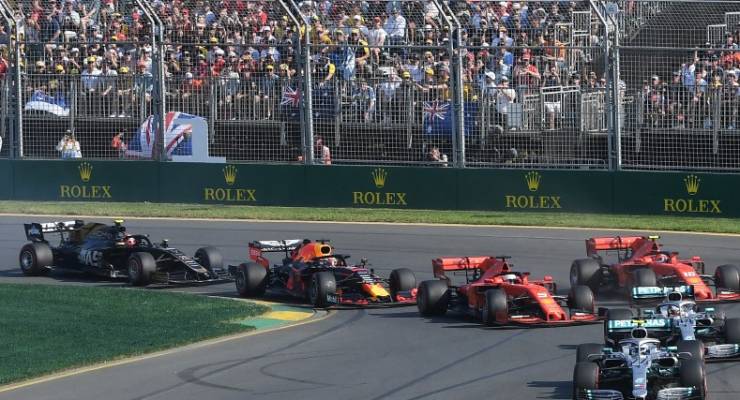
Another year and another Australian Grand Prix has zoomed by. It’s become a cliché, one that’s bellowed from within Melbourne’s hipster-belt suburbs, that the GP is a waste of taxpayers’ money. But, as tired as that saying is, it’s not any less true.
The grand prix sits among a healthy set of major sporting events that form part of Melbourne’s tourism push and rhetoric about being the national, if not the world, capital of sports. Though its worthiness is hotly debated every year, the government of the day always staunchly defends its cost and relevance. It’s a defence that doesn’t follow the shape of other discussions involving public money.
The numbers
In 1996, the event’s first year in Melbourne, about 400,000 attended the grand prix. It’s a highly respectable number — although down 20% compared to the previous year, when Adelaide last hosted. The following year, numbers plummeted by a further 25%, to 289,000. 2004 saw the highest numbers since the event’s inaugural year: 360,885 people went through the gates. Since then, numbers have fluctuated between low-300,000s and high-200,000s. 2016 had the smallest crowd to date: 272,300.
Compare this to the Australian Open. Yes it’s a longer event, but its numbers have grown significantly every year since 2014. Its attendance has jumped from 643,280 to a record 780,000 earlier this year.
Of course crowd figures aren’t the only way to measure success or failure. But the GP is also plagued by its annual loses, which are handily picked up by the taxpayers every year: $57.1 million in 2017, $61 million in 2016, $61.7 million in 2015 and $59.97 million in 2014. This is more than double the subsidy of $26.6 million in 2005.
In contrast, a 2016 report released by Tennis Australia reported their event injected $278.1 million into the state economy that year and produced an annual return of about 27.8%. Whenever the GP’s losses are mentioned, we hear about other economic benefits (interstate and international visitors, increased hospitality revenues etc). “[The grand prix is] strengthening Melbourne’s and Victoria’s liveability and civic pride,” Grand Prix Corporation chairman John Harnden wrote in a recent report. But trying to glean tangible figures about the value of these benefits are disputed at best, and nebulous at worst; how much is gained in media value has never been clear, for example. These benefits also come with “invisible” additional costs such as pollution, traffic congestion and the loss of access to Albert Park for eight weeks preceding the event.
Is it worth it?
Another marker of success — although it’s not one that is likely to be picked up by KPIs — is how major sporting events fit into the cultural zeitgeist.
The Australian Open, held in Melbourne every January, has the sun-streaked vibes of a beach party that reverberates throughout the city. There’s a build-up of excitement weeks in advance with announcements of star players and prize money. Organisers have also created an increasingly popular mix of live music and family-friendly options that have become more like a festival than solely a sporting event.
Then there’s the Melbourne Cup: an event with a historical grip on the city so tight that not only do we have a public holiday in its honour, but workplaces will routinely shut down to watch the main race in their respective tea rooms. BYO the most unfortunate hat you can find in Lincraft.
All of these sporting events play a part in Melbourne’s story. They’re not just for their biggest fans, but have found a home in the cultural calendar in a way that transcends sport.
It’s true that not all sporting events need to attract huge numbers, that there should be space for more niche events, but when it comes to significant government and taxpayer support, it’s a matter of business. And the business case for the grand prix has rarely left its life-support system.
Melburnians have never truly embraced the grand prix; no matter how hard it’s been pushed, no matter which celebrities have been flown in, and no matter how hard sponsors try to whip up a frenzy. There is no build up of excitement, no frenzy of media reports, no real enthusiasm in the air.
Melbourne is contracted to host the grand prix until at least 2023. When it does finally find a new home, it won’t be because of its cost or the damage it did to the environment, it will be because Melbourne didn’t care.
Should the grand prix run its final lap? Send us your thoughts at boss@crikey.com.au.








The Grand Prix is a hangover from the Kennett years when neoliberalism was at its most rampant and most rancid in Victoria: an elitist, testosterone-driven indulgence that matched the egos of those in power at the time. None of the family involvement of cricket or tennis or footy; none of the historical roots of the Cup, and uncomfortably wedged between summer (when we’ve all pretty much had our fill of sport) and the true winter preoccupation of the city (footy, of course. Though even rugby and soccer connect better with Melbourne than Formula One does).
Compare it with another international event that happens around the same time: the Comedy Festival. That’s much more in tune with the city and the time of year as the weather changes, and much more widely supported as a result.
Send the race back to Adelaide. Or get rid of it altogether, given the way climate change is destroying the country. It doesn’t belong in Melbourne. It never did.
I couldn’t give a toss about the GP and would be unaware it was on if it weren’t for the distant drone which permeates even the northern suburbs. My friends south of the river are not so fortunate, suffering days of noise and traffic upheavals. I’ve never heard anyone complain about the noise of tennis balls.
Having attended a grand prix a few years ago, I must say I was underwhelmed, every vantage point was taken up by corporate stands, and most other attendees where watching it on giant screens behind the stands, may as well stayed at home. Even if you managed to get a glimpse of the race between the trees and the corporate stand by standing on someones shoulders the cars went by so fast you had no idea of who it was. Great place for corporate boxes with all the trimmings, far to expensive for the average worker. It’s run its race time to move on.
I respect and agree with the opinion expressed in this article but the real facts on the grand prix and state sponsored motor racing in Australia show this industry uses misleading and deceptive claims to justify its existence.
To summarise: the attendances are never counted, they are a product of major events mathematics, the economic reports are then based on these pumped up figures, then the television audience long claimed for the GP is the cumulative total of all 21 races in the year.
Let’s examine the attendances quoted in the article by comparing them with the facts. First fact: all of Melbourne’s major events count their patrons. The grand prx does not. The ABC’s Jon Faine gave a figure of 26,336 grandstand seats for this year’s event. Add these to the corporate box capacity of fewer than 8,000 seats and that’s around half the spectator capacity of the event. The remainder are on three viewing mounds of maximum 3,000 capacity or spread along the fence where they can fit. All up, fewer than 70,000 capacity. It looks like a big crowd because the grandstands and mounds are low and fill the screen as the cars whizz past.
The other way of determing crowd numbers is to take the audited ticket sales revenue, divide it by seat numbers matched to prices then apportion the balance to general admission prices. Result? Fewer than 70,000 tickets sold each year.
It’s a con. It always has been. Greg Baum of The Age won a Walkley ten years ago exposing it. A new book on Newcastle Supercars shows this sort of cheating and deception is endemic to this state sponsored ‘street racing’. But it has bipartisan political support, so Auditors General have found it hard to crack. A billion dollars of state subsidies gas gone into the grand prix, all based on misleading and deceptive claims.
Peter Logan, former councillor and deputy mayor City of Port Phillip and researcher Save Albert Park
Same in Darwin and Adelaide- huge government contributions to a ‘sport’ with a small fan base. Meanwhile, parents struggle to find money for their kids to play sport. Give the millions pumped into cars driving around in circles instead to support sport for young people and give all children the opportunity to play their chosen sports at local, state and national levels. A much better investment of tax payer dollars than an outdated ‘sport’ like motor racing.
It begs the question, then- why are both Liberal and Labor governments at state level so interested in keeping it?
There’s got to be something. I don’t believe all those successive leaders are just rev-heads.